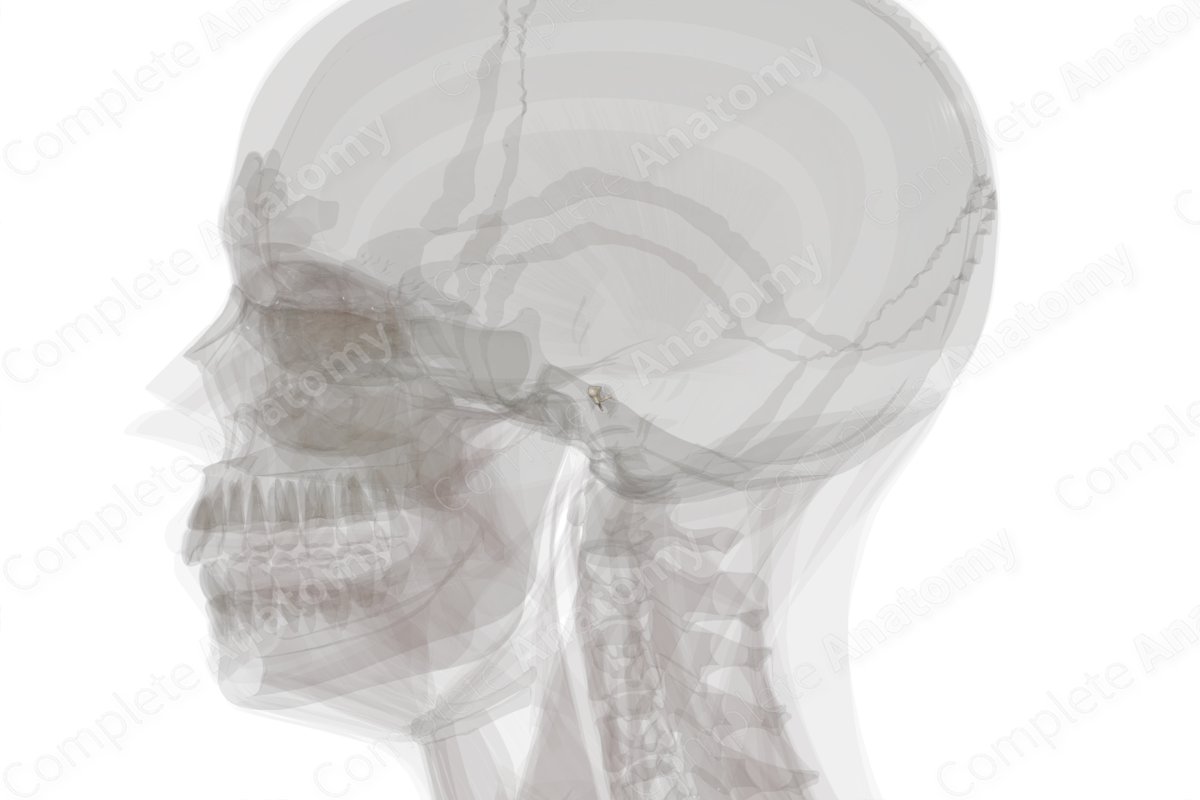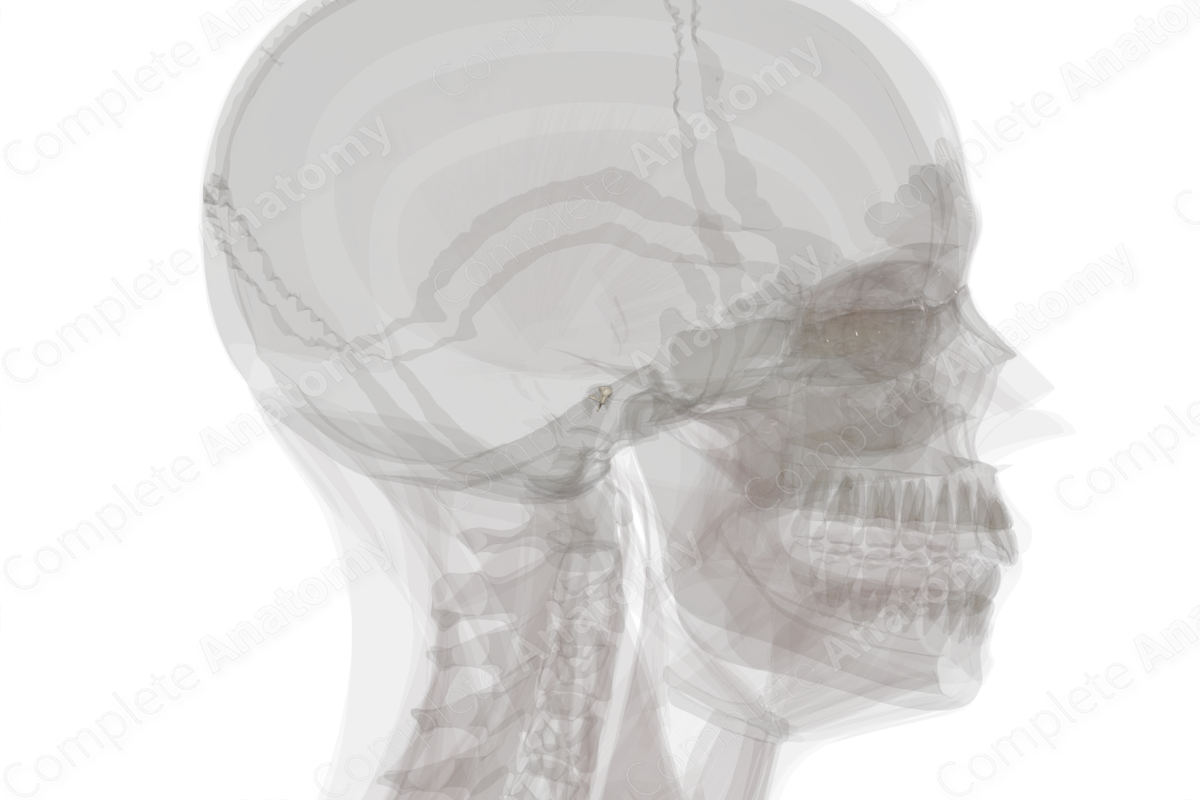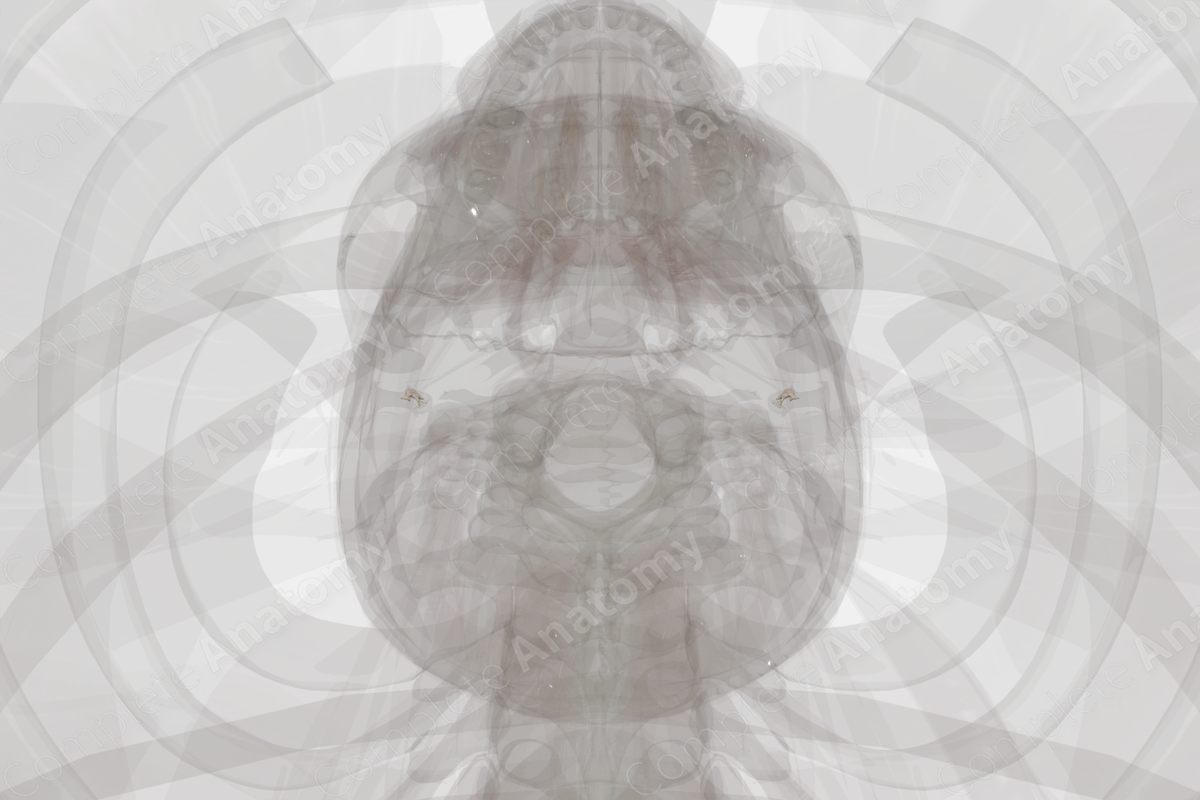
Description
The auditory ossicles are a chain of three tiny bones located in the tympanic cavity of the middle ear in the temporal bone. The auditory ossicles are the malleus, incus and stapes and they are connected to the walls of the tympanic cavity by multiple ligaments. The chain of auditory ossicles extends from the tympanic membrane to the vestibular window of the labyrinthine wall, where:
- the tympanic membrane attaches to the malleus;
- the malleus articulates with the incus at the incudomallear joint;
- the incus articulates with the stapes at the incudostapedial joint;
- the stapes attaches to the vestibular window of the labyrinthine wall.
The auditory ossicles are involved in the sense of hearing. They transfer the vibratory movements of the tympanic membrane, produced by sound waves, to the internal ear for sensory processing. Their associated muscles, the tensor tympani and stapedius muscles, are capable of limiting the vibratory movement of the ossicles to prevent damage to internal ear structures when hearing loud sounds.
Learn more about this topic from other Elsevier products
Auditory Ossicles: What Are They, Location, Function, and More

The auditory ossicles malleus, incus, and stapes are three small bones in the middle ear that transmit air vibrations from the outer ear Learn with Osmosis

